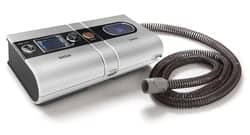A new study finds that the 6-minute walking distance test (6MWD) is an effective tool for understanding disease severity in patients with chronic obstructive pulmonary disease (COPD). The results of the 3-year global study of patients with COPD will be presented this week at the American Thoracic Society’s (ATS) 2011 International Conference in Denver.
“We found that baseline 6MWD was predictive of hospital admission with an acute COPD exacerbation, was relatively stable in milder COPD, and has a steady rate of decline in patients with severe disease,” said Martijn Spruit, PhD, study author and scientific advisor and research leader at the Centre of Expertise for Chronic Organ Failure (CIRO+) in Horn, Netherlands. “This confirms prior observations that the results of the 6MWD are related to the risk of death in patients with COPD, and that the test is a useful tool in understanding disease severity in patients with COPD.”
Researchers studied 2,110 patients with moderate to severe COPD who underwent a supervised 6MWD at study enrollment to provide a baseline value and annually for 3 years. Death and exacerbation-related hospitalization were recorded.
During 3 years of observation, 200 patients died and 650 were hospitalized for exacerbations. Mortality rates and exacerbation-related hospitalization were higher in COPD patients as baseline 6MWD decreased. Researchers found that a 6MWD threshold of 357 meters was optimal to predict an increased risk of death. The mean rate of deterioration of the 6MWD was 5.7 meters per year and was primarily limited by the ability of the patient to breathe easily.
“Exercise tolerance is an important clinical aspect of COPD which can be easily and reliably measured with the 6MWD test,” said Spruit. “These data confirm the power of the 6MWD to identify subsets of the COPD population at higher risk of exacerbation-related hospitalization or death.”
The ability to group COPD patients according to their functional status disease severity, adds Spruit, gives health care provides a way to better tailor patient therapy to better utilize resources.
In addition, Spruit noted that the 6MWD test offers benefits over the more traditional FEV1 test to measure COPD disease severity.
“The FEV1 has limitations as a marker of disease severity in COPD because it fails to capture systemic manifestations of the disease,” said Spruit. “This study was designed to determine if the 6MWD could be an additional measure of disease severity, and the results confirmed that it can.”
Source: American Thoracic Society









